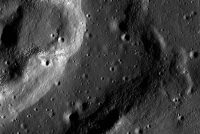Are humans the only intelligent life in the universe? Are there any aliens? How to find aliens? A few days ago, a research team led by Professor Gao He of Beijing Normal University conducted a simulation study. The results show that even in the most optimistic case, it will take at least 2000 years for humans to receive a signal from an alien; in a pessimistic case , it takes at least 400,000 years to receive a signal.
We collectively refer to intelligent life beyond Earth as extraterrestrial (Extraterrestrial Intelligence, ET for short). In 1950, Italian Nobel laureate and physicist Enrico Fermi proposed in an informal meeting: “If alien civilizations really exist, where are they? Why is there no evidence that they have visited Earth? “This is the famous Fermi Paradox – if aliens exist, why have we never received a signal from them? To find aliens scientifically, we must start from astronomy. With the discovery of electromagnetic radiation in the 19th century and the invention and development of astronomical radio telescopes in the 20th century, the search for extraterrestrial civilizations has gradually become scientific and has become an important field in astronomy.

The search for aliens is serious scientific research
With the widespread use of radio waves on Earth, people began to speculate that maybe aliens also possess radio technology and send broadcast signals into the universe, then they can prove their existence by capturing the radio signals sent by aliens.
In 1959, two astronomers, Phillip Morrison and Giuseppe Cocconi, devised a thought experiment to point the world’s most powerful radar transmitter at a huge receiving antenna and calculate the farthest distance the transmitter and receiver could establish a radio connection. . The results showed that radio signals can be received even when the transmitter and receiver are light-years apart (the distance light travels in a vacuum for a year). This result prompted the two scientists to publish a paper in the journal Nature exploring the question of alien radio communications—if capturing signals is feasible, what frequencies should be captured? Cocconi and Morrison proposed that a universal and unique frequency in the radio frequency band is 1.42GHz, that is, 21cm of neutral hydrogen, which is widely present in the universe; another frequency band is 1400MHz-1700MHz (OH). Since hydrogen and hydroxyl combine to form water, the frequency of its radiation emission is called a “water hole”. They argue that because these frequencies are associated with life on Earth, there is reason to search for aliens near these frequencies.
In 1960, Frank Drake made the first radio observations of the Search for Extra-Terrestrial Intelligence (SETI) program, known as Project Ozma. Using the 26-meter Tuttle Radio Telescope at the National Radio Astronomy Observatory in West Virginia, the researchers searched for radio frequencies near the hydrogen frequencies of the two sun-like stars Antenna and Antenna, 10.2 and 11.9 light-years away, respectively. Signal. Yet nothing was found.
Since then, the United States, the Soviet Union, Australia, Canada, France, the Netherlands, the United Kingdom and other countries have conducted more than 60 searches at different frequencies, with a cumulative search time of more than 200,000 hours.
NASA scientists used a radio telescope to search for extraterrestrial signals in 1992, and the search was carried out by two teams. One of the teams at Ames used “target-seeking” technology to detect about 800 sun-like stars 80 light-years away from Earth in the 1GHz-3GHz frequency band, while the other team used “target search” technology in the Mojave Desert, California, USA. The 34-meter radio telescope in the Goldstone Telescope Group conducts an “all-sky search.” Unfortunately, the all-day search project was terminated after a year due to insufficient funds, and the “Target Search” was renamed “Phoenix Project” and reopened in 1995, using the Parkes radio station with a caliber of 64 meters located in New South Wales, Australia. telescope to observe. In 1998, the Arecibo radio telescope participated in the search of the “Phoenix Project”. It was the largest single-diameter radio telescope in the world at that time, with a diameter of 305 meters. During the nearly 10 years of its work, the “Phoenix Project” observed about 800 star systems 200 light-years away from the earth, covering a frequency range of 1200-3000MHz, which is one of the most extensive search areas in the radio search for extraterrestrial civilizations.
Because it is less expensive to make a lot of small antennas than one very large one, and because the antenna array can observe more targets in a given amount of time, with funding from Microsoft co-founder Paul Allen, the first dedicated SETI was built. The observing radio telescope – the Allen Telescope Array. The Allen Telescope Array consists of 42 dishes that can simultaneously listen to 72 million 1Hz radio channels. The Allen Telescope Array has enabled SETI to search at least 100 times faster, making it a crucial step in SETI’s development. Since then, in the 1990s, many countries around the world have successively carried out many observation projects about SETI.
It is worth mentioning that Frank Drake proposed at a meeting on extraterrestrial intelligent life at the Green Bank Observatory that an equation can be used to estimate the number of extraterrestrial civilizations in the Milky Way, which is the famous Drake equation N=RfpneflfifcL. Among them, N is the number of alien civilizations in the Milky Way; R is the star formation rate of the Milky Way; fp is the proportion of stars with planetary systems; ne is the number of planets in each solar system that are suitable for life; The proportion of planets that actually developed life; fi the proportion of intelligent life in planets with life; fc is the proportion of intelligent life that developed into civilizations and sent out detectable signals; L is the average lifespan of advanced civilizations, or It is said that the survival time of intelligent civilization after mastering communicable technology. The first three parameters involve the development of astronomical observations and astrophysics, and the last four parameters involve multiple disciplines such as biology, chemistry, and sociology, and are full of too many uncertainties.
This equation is unsolvable, but can provide a heuristic guide. Most theoretical studies attempt to rewrite the Drake equation or focus on the effects of one of them. Even if it cannot give an accurate answer, it gives a reasonable hypothesis structure, and when modifying or limiting each of the parameters, it will bring new results and thinking.
Should Humans Actively Send Signals?
As the search for extraterrestrial civilizations deepened, people began to realize that in addition to listening to signals, they might be able to send signals into space. In 1971, the National Academy of Sciences and the Soviet Academy of Sciences held the first Soviet-American Communication with Extra-Terrestrial Intelligence Conference at the Bilakan Astrophysical Observatory, which discussed methods, techniques and linkages of radio search consequences, information content, etc.
These discussions were soon put into practice—the Pioneer 10 and Pioneer 11 spacecraft launched by the United States in 1972 and 1973 each carried a metal plate, known as the Pioneer plaque. The Pioneer plaque, designed by Carl Sagan and Frank Drake, includes information on the relative position of the sun in the galaxy and the distribution of the solar system, the position of the Earth, the silhouette of a spaceship and sketches of men and women, the first messages sent by humans into space.
In November 1974, Frank Drake led the team to use the Arecibo radio telescope to send a radio message called “Arecibo Message” to the globular cluster M13, which is about 25,000 light-years away from us. The content includes five atoms with biological significance (H, C, O, N, P); a schematic diagram of a DNA double helix; descriptions of people, the solar system, and the Arecibo Observatory, etc.
In 1977, NASA launched two space probes Voyager 1 and Voyager 2 to the outer solar system, each carrying a Voyager Gold Record called “Voice of the Earth”. The record features a variety of sounds from the natural world, along with a selection of music from different cultures and eras, and spoken greetings in 55 ancient and modern languages, as well as inspirational “Through the Darkness to the Light” written in Morse code. information; the record collects 116 images at the same time, covering mathematical and physical quantities, the solar system and its planets, DNA, human anatomy and reproduction, and includes photographs of animals, insects, plants and landscapes in addition to photographs taken by humans. It is worth mentioning that the cover of this record is made of aluminum and electroplated on it is an ultrapure sample of the isotope uranium-238, which has a half-life of 4.468 billion years, which makes civilizations encountering gold records will The ratio of the remaining uranium to other elements can be used to determine the age of the record.
However, there has been debate about whether people should passively search for technosignatures left by alien civilizations or actively send signals into space. Many scientists, including Hawking, have proposed that if there are aliens, will their civilization develop on Earth? Will actively transmitting signals allow them to plunder the earth’s resources? The possible negative consequences of actively sending signals should require careful consideration by all human beings.
New advances in the search for aliens
In recent years, the development of SETI has been actively promoted at home and abroad. In 2016, the “Breakthrough Listen Initiative” (BLI) was officially launched abroad. BLI is a 10-year, $100 million search for extraterrestrial intelligent life that uses radio and optical techniques to search the Milky Way and 100 nearby galaxies. BLI is currently searching for possible signals using the Green Bank and Parkes telescopes, among others.
In my country, the National Astronomical Observatory of the Chinese Academy of Sciences and the “Breakthrough Listening Program” signed a cooperation agreement in 2016, and will use my country’s Five-hundred-meter Aperture Spherical Radio Telescope (FAST) for cooperation. FAST is currently the largest single-aperture radio telescope in the world. The research on SETI is carried out by using the FAST-SetiBurst configured at the back end of the telescope receiver. Compared with the once-largest Arecibo telescope, FAST can receive more signals from different sky locations in the same time, and at the same time, it has higher sensitivity and can detect fainter celestial objects. I believe that FAST can bring us more surprises in future observations.
In fact, in addition to capturing the radio signals sent by aliens mentioned above, other indirect observation methods can also be used to find aliens.
First, possible intelligence can be discovered by observing changes in the brightness of stars. We know that planets orbit the star, and when the planet blocks the star in the line of sight, it causes the star’s brightness to change periodically. In the same way, giant structures built by alien civilizations may also cause changes in the brightness of stars. Here, the author briefly introduces the “Dyson Sphere Hypothesis”. In 1959, American physicist Dyson once proposed that a highly developed civilization must have the ability to launch energy harvesters around the sun into space, and even surround the sun with a spherical structure. Then, a giant structure like a “Dyson sphere” may cause a change in the brightness of its host star, which is reflected in the star’s light curve, but this method lies in being able to distinguish between astrophysical mechanisms and brightness changes caused by man-made objects.
Second, find aliens by looking for atmospheric pollutants on other planets. We know that motor vehicle exhaust and fossil fuel combustion produce polluting gases such as nitrogen dioxide. Relevant scientists have found that pollutants in the earth’s atmosphere have strong absorption lines. Therefore, by analyzing the spectral data, the chemical composition of the atmosphere can be determined, so as to find out whether there is atmospheric pollution caused by civilization.
Again, alien civilizations can also be found by looking for space junk. When human beings develop aerospace, they will leave behind various man-made wastes and derivatives. These objects range from the burning residue of solid rockets to as large as multi-segmented rockets that are abandoned after launch. Highly developed civilizations may also produce a lot of space junk and discover aliens by observing space junk. In addition, when the amount of space junk is too large, a planetary ring may form around the planet, and when this planetary ring reaches a certain number, it may also have an effect on the brightness change of the star.
In addition to observational methods, theoretical assumptions can also give us some inspiration.
For example, I recently used a hypothetical alien appearance rate and birth time to study the probability of humans receiving a signal from a certain number of civilizations in the Milky Way through numerical simulations. The simulation results show that, under optimistic conditions, there may be 40,000 alien civilizations in the entire evolutionary history of the Milky Way, while humans need to survive an average of 300,000 years to receive a signal, and at least 2,000 years to receive a signal; under pessimistic conditions , there are more than 100 alien civilizations in existence, and it takes an average of 50 million years to survive to receive a signal from other CETIs, and at least 400,000 years to receive a signal. In the entire evolutionary history of the Milky Way, due to the randomness of the birth time and the limitation of the communication lifespan, it may cause our life cycle to be completely staggered from that of other alien civilizations. Therefore, an important reason why humans have not observed alien signals until today is very It may be that our ac lifetime is not long enough to quantitatively explain the Fermi paradox.
It must be pointed out that since there is currently no observational data that can limit these parameters, the emergence probability and birth time of extraterrestrial civilizations are unpredictable, so there is great uncertainty in the results predicted by the theory. However, with the rapid development of astronomical observations, quantitative calculations for such studies have become possible. Through these quantitative calculations, we can give us theoretical estimates, so that we can effectively judge whether some suspicious signals are indeed sent by other aliens, and use the signals observed in the future to carry out valuable information on other aliens. Research, such as the birth rate and birth time of aliens mentioned in our study.
After about 60 years of exploration, we still have no observational evidence to confirm the existence of aliens elsewhere in the universe. So, can it be concluded that aliens do not exist? also can not. There is no answer to this question without a lot of searching.
Relevant scientists likened the universe to a multi-dimensional “cosmic haystack”, and estimated the part of the “haystack” that several large-scale radio SETI projects have jointly searched for, and found that only a tiny parameter space was searched. This space is equivalent to finding only one large bathtub or small swimming pool area in all the oceans on earth. There are no aliens in this area, which does not mean that there are no aliens in the entire universe.
Spacesrobot believes that with the astronomical With the further improvement of observation capabilities, SETI-related research will also develop rapidly, and the search for aliens will not stop.




GIPHY App Key not set. Please check settings